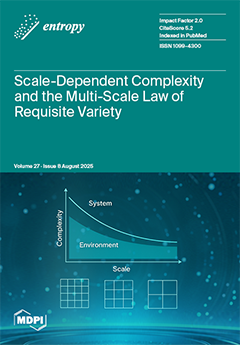The Poincaré plot was introduced as a tool to analyze heart rate variations caused by arrhythmias. Later, it was applied to time series with normal beats. The plot shows the relationship between the inter-beat interval (IBI) of one beat to the next. Several parameters were developed to characterize this relationship. The short and long axis of the fitting ellipse,
SD1 and
SD2, respectively, their ratio, and their product are used. The difference between the IBI of a beat and m beats later are also studied,
SD1(
m) and
SD2(
m). We studied the mathematical relations between heart rate variability measures and the Poincaré measures in the time (standard deviation of IBI,
SDNN, root mean square of successive differences,
RMSSD) and frequency domain (power in low and high frequency band, and their ratio). We concluded that
SD1 and
SD2 do not provide new information compared to
SDNN and
RMSSD. Only the correlation coefficient
r(
m) provides new information for
m > 1. Novel findings are that
ln(
SD2(
m)/
SD1(
m)) =
tanh−1(
r(
m)), which is an approximately normal distributed transformation of
r(
m), and that
SD1(
m) and
SD2(
m) can be calculated by multiplying the power spectrum by a weighing function that depends on
m, revealing the relationship with spectral measures, but also the relationship between
SD1(
m) and
SD2(
m). Both lagged parameters are extremely difficult to interpret compared to low and high frequency power, which are more closely related to the functioning of the autonomic nervous system.
Full article






